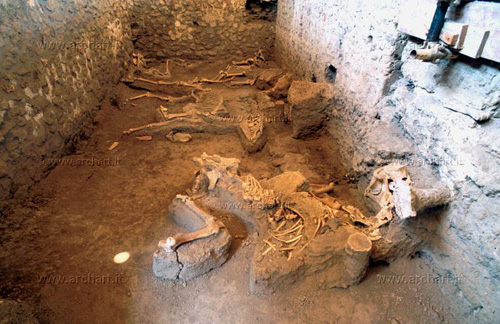Ever since the remains of a seemingly unknown breed of horse were excavated at the ancient city of Pompeii, scientists have been puzzled over this find. Now, the riddle is solved: what was thought to be a horse, is actually an ass.
After DNA tests were done on a skeleton discovered amongst the ruins of an ancient Roman house in Pompeii in 2004, Italian scientists concluded they had discovered a new breed. Yet, after taking a closer look at the data, researchers from Cambridge and Munster say that in this study, a mistake was made. Their arguments – the donkey DNA was contaminated with horse DNA, leading to an artificial hybrid DNA being formed – are published in a letter to the editor of the Journal of of Cellular Biochemistry.
An ancient equine from Pompeii?
For the original study, five skeletons from the family of Equidae – which includes horses, donkeys and zebras – were analyzed. These skeletons had been unearthed at the ancient Roman city of Pompeii – from the stables of the "Casa dei Casti Amanti", the House of the Chaste Lovers. They were found well preserved, covered by the layer of volcanic ash that buried Pompeii and nearby Herculaneum when the Vesuvius erupted in 79 AD.
The research team that conducted the original study looked at the 2,000-year-old mitochondrial DNA of the horses – DNA that does not belong to the nucleus, but to the "energy plants" (mitochondria) of cells. Four of the DNA types were easily assigned, they were consistent with typical mitochondrial horse genome. The fifth horse, however, seemed to be a horse-like indeed, but it possessed unknown DNA.

Source from : http://heritage-key.com
For more interesting topics related to archaeology, visit archaeology excavations.
No comments:
Post a Comment